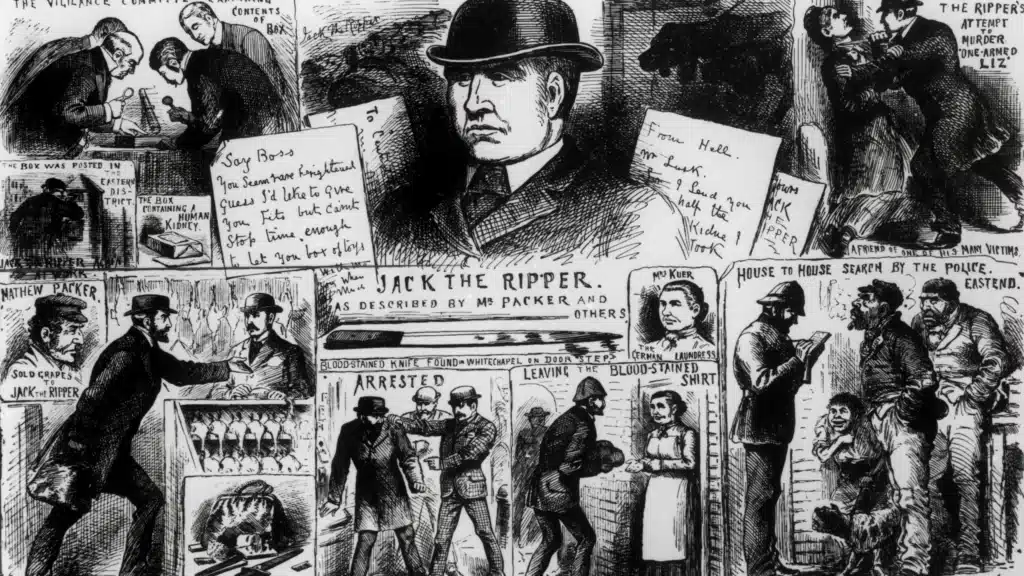The dark streets of Whitechapel in 1888 loom large in our imaginations. Historians, authors, and true-crime enthusiasts have spent decades sifting through official documents and personal letters to figure out who committed the most infamous murders of Victorian London.
The case seemed like a puzzle that refused to be solved. People threw around countless theories about the Ripper’s identity, naming doctors, aristocrats, and even a member of the royal family as suspects.
Those theories spawned a dedicated community of researchers who scoured archives and tried to interpret cryptic clues. Some approached the topic with a scholarly mindset, examining old forensic notes and scouring dusty police reports. Others imagined wild stories that blurred the line between fact and fiction like Alan Moore’s From Hell.
That blend of historical research and sensational speculation turned Jack the Ripper into a folklore-like figure, drawing attention from every corner of the globe.

Proof from a Shawl
Over a century later, historian Russell Edwards set out to solve the mystery using a shawl said to have belonged to one of the victims, Catherine Eddowes.
That garment was apparently recovered at the crime scene and had been kept under lock and key by private collectors. Many were skeptical at first. Was this just another publicity stunt? Did we really have a piece of cloth connected to the Ripper crimes?
Edwards believed he had the real thing and teamed up with scientists who specialized in analyzing genetic material. They conducted multiple tests on the shawl’s fibers to see if any old traces of DNA survived.
Over the course of many painstaking experiments, they compared the evidence with DNA samples from modern-day descendants of both victims and suspects. It was a bold approach, using cutting-edge lab techniques to examine a relic from Victorian London.
The results seemed to point to Aaron Kosminski, a Polish barber who had long been on the list of potential suspects. Kosminski was briefly questioned by police, then released. He died years later after spending time in an asylum.
Most of the official records never pinned the murders on him, yet investigators kept bringing his name up. Now, according to Edwards, the DNA results offer a convincing match. Many folks who have studied the Ripper saga believe this new claim warrants a second look.
Too good to be true?
Some historians embrace these DNA findings as the closest thing to proof they’ve seen. Others say the shawl’s provenance might be shaky.
There are questions about whether it really came from the crime scene and some ask if the shawl was handled by too many individuals, possibly contaminating the fabric. The shawl will be a subject for debate in academic journals and amongst Ripperologists for years to come.
But the claim seems to have breathed fresh life into a file that many called unsolvable. There is an undeniable fascination with bringing modern science to bear on an time known for its lack of forensic technology..

